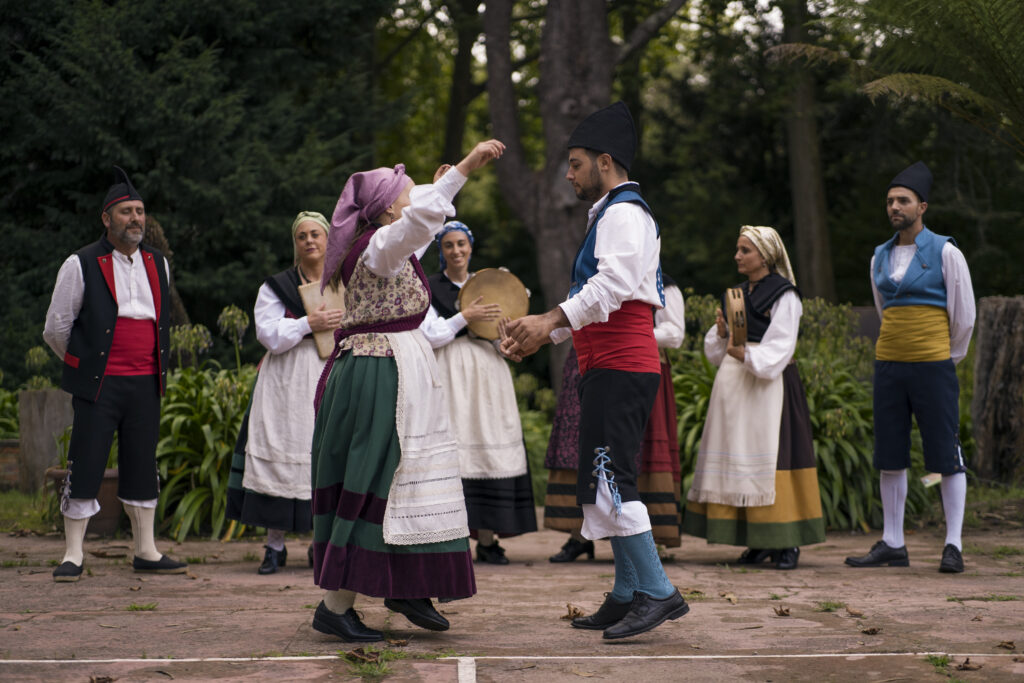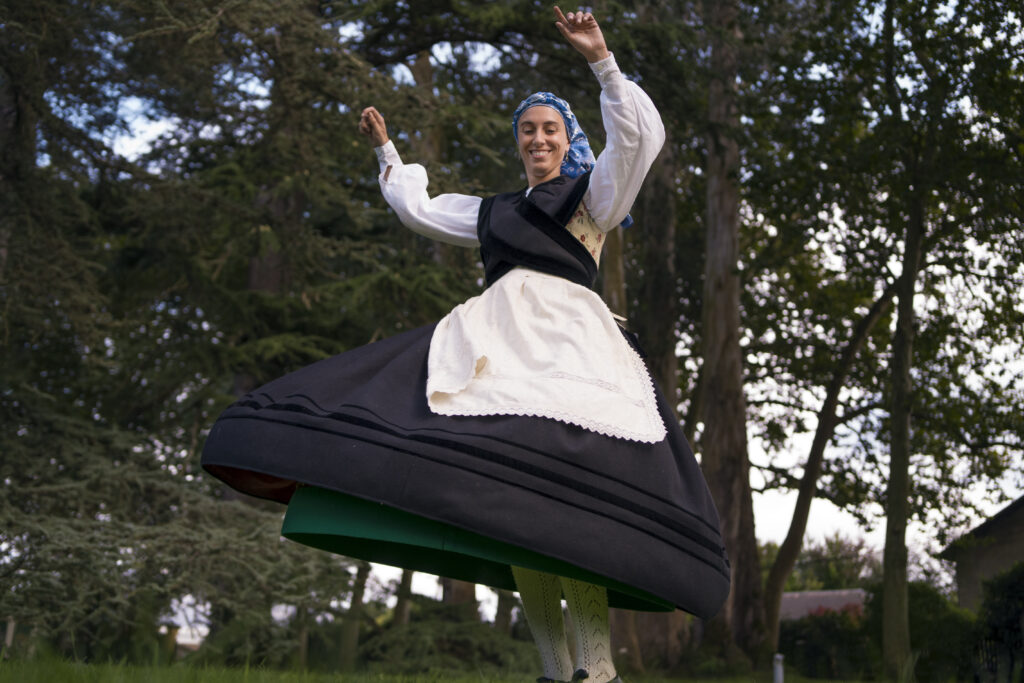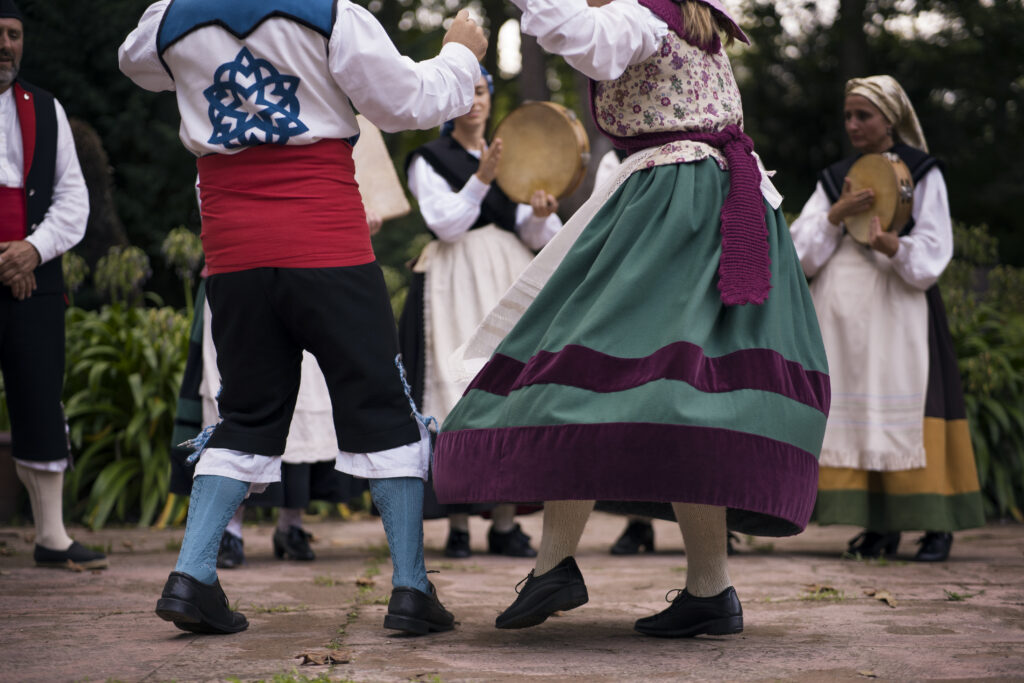
Summary
Kurdish dance: origins and step-by-step guide
Kurdish dance is rich in history and traditions. It reflects the soul of a resilient and proud people. This article explores the styles and characteristics of Kurdish dances, such as Halay and Govend.
Summary
Origins and history of Kurdish dances
You will also learn to dance Halay, Govend, Delîlo and Şêrîn with detailed instructions. Each section will guide you step by step to master these dances. Discover how these dances unite communities and celebrate Kurdish culture.
Kurdish dances are a vibrant reflection of the history and culture of the Kurdish people. Among the most emblematic dances, we find Halay, a traditional dance practiced in Anatolia, the Caucasus and Thrace. Known by various names depending on the region, it is called churdj bar Or koçari in Armenian, yallı in Azeri, Χαλάϊ in Greek, Gowend Or Dilan in Kurdish, Ḥeggāʾ in Syriac and halay In turkish. Each region has its own variation, influenced by the traditions and origins of local people.
Halay is mainly danced at weddings and festive occasions, where it brings communities together in common celebration. Beyond its festive aspect, Halay has a particular importance for the Kurds: it is a dance of resistance and cultural affirmation. In a context often marked by identity struggles, this dance symbolizes the solidarity and resilience of the Kurdish people in the face of adversity.
Every step, every movement of the Halay tells a story, that of a people who celebrate their culture and traditions with pride. Halay is not just a dance, but a true act of cultural resistance, a way for Kurds to preserve and transmit their ancestral heritage.
Styles and characteristics of Kurdish dances
Kurdish dances are as diverse as the regions where they are performed. Each of them has unique characteristics, reflecting the cultural richness and local traditions.
Halay
THE Halay is a dance deeply rooted in Kurdish traditions. Highly regionalized, each town or village has developed its own distinct style. Danced in groups, dancers hold each other by fingers, hands or arms, forming a straight, curved or snail-shaped line, depending on the space available. The leader, often adorned with colorful fabric, guides the group and can sometimes perform solos. The dance begins slowly and gradually accelerates, requiring harmonious coordination of the feet, torso and arms.
Govend
THE Govend, another emblematic dance, is a symbol of resistance and cultural affirmation. This dance is often performed in a line or circle, with the dancers holding hands. Movements are fluid and expressive, emphasizing synchronization and group unity. The Govend, through its simplicity and elegance, embodies the community spirit and resilience of the Kurdish people.
Delîlo
Originally from Türkiye, the Delîlo is a circular dance where participants hold hands or shoulders. The basic steps are simple, but the emphasis is on graceful movements of the arms and torso. Often accompanied by songs and hand clapping, this dance creates a festive and joyful atmosphere, celebrating life and unity.
Canary
THE Canary, from Syria, is characterized by its complex and dynamic foot movements. The dancers, in a line or circle, hold hands and perform rhythmic jumps and kicks. Accompanied by percussion and singing, this dance is both energetic and captivating, highlighting the dexterity and agility of the dancers.
Musical instruments accompanying Kurdish dances
Kurdish dances are often accompanied by traditional music played on specific instruments. THE zurna (rustic oboe) and the davul (shoulder drum) are the most common. Other instruments like saz (long-necked lute), the kemençe (lyre), the tulum (bagpipes), clarinet or accordion can also enrich the melody, adding varied nuances and textures to the rhythms of the dances.
Kurdish dances, through their diversity and unique characteristics, are a living testimony of Kurdish culture and traditions. They tell stories of resistance, joy and unity, bringing communities together in moments of celebration and sharing.

How to dance the halay step by step
THE halay is an emblematic Kurdish dance, practiced at weddings and festivities. Learning to dance the halay is a beautiful way to connect to this rich tradition. Follow these detailed steps to master this traditional dance.
Form a group
To start, form a group of dancers. Participants hold hands, fingers or arms, according to regional tradition. This position creates a physical and symbolic link between the dancers.
The leader
The leader stands at the front of the group and holds a colored cloth. This fabric is not only decorative, it helps guide movement and adds a festive touch. The leader is responsible for setting the tempo and introducing variations in the steps.
No basis
The basic halay steps are simple but require good coordination. Here's how to do it:
- Take a step forward with your right foot, then bring your left foot next to your right.
- Take a step forward with your left foot, then bring your right foot next to your left.
Repeat these movements, maintaining a regular rhythm. Gradually, the pace accelerates, which requires perfect synchronization between the dancers.
Coordination of movements
Halay doesn't just involve the feet. It is essential to coordinate the movements of the torso and arms:
- Move your chest : Lean your torso slightly forward with each step, following the rhythm of the music.
- Arm movement : The arms can be raised or lowered rhythmically, adding a visual dimension to the dance.
Leader Solos
Sometimes the leader leaves his position at the front to perform solos in the center of the circle. These solos can include more complex movements like crouching and waving the colored fabric. It is a time for creativity and demonstration of skills.
Rhythm and music
The halay is accompanied by traditional music, often played with instruments such as the zurna and the davul. The music begins slowly, then speeds up, drawing the dancers into a dynamic cadence. Pay attention to changes in rhythm to adjust your movements.
Tips for Beginners
- Follow the leader : Observe the leader carefully and follow his directions to stay in sync with the group.
- Stay relaxed : Keep your movements natural and fluid. Tension can interfere with fluidity and coordination.
- Practice regularly : The more you dance halay, the more comfortable you will be with the movements and rhythm.
The halay is a dance of celebration and unity. By following these steps, you will not only learn the basic movements, but also feel the joy and community connection it brings. Practice with enthusiasm and enjoy every moment spent dancing the halay.
How to dance the governmentd step by step
THE government is a traditional Kurdish dance that embodies community spirit and cultural resistance. To learn how to dance the govend, follow these simple steps and immerse yourself in the essence of this captivating dance.
Form a circle
The first step to dancing the govend is to form a circle holding your hands. This position symbolizes the unity and cohesion of the group, fundamental values in Kurdish culture.
No basis
To master the basic steps, follow these instructions:
- Take one step with your right foot diagonally forward. Next, bring your left foot next to your right.
- Take one step with your left foot diagonally forward. Then, bring your right foot next to your left.
Repeat these movements, maintaining a regular rhythm. You will find that the pace gradually picks up, requiring precise foot coordination and constant attention to the movement of the group.
Arm and torso movements
Govend is not limited to foot movements. Add arm and torso movements to enrich the dance:
- Raise and lower your arms in time with the music. This adds a visual and expressive dimension to the dance.
- Tilt your torso slightly from side to side. This subtle movement harmonizes the entire body with the rhythm of the music.
Rhythm and music
Govend is often accompanied by traditional music played with instruments such as the zurna and the davul. The music begins slowly, then speeds up, drawing the dancers into a dynamic and energetic cadence. Pay attention to changes in pace to adapt your movements accordingly.
Tips for Beginners
- Get in sync : The key to govend lies in the synchronization of movements. Watch the experienced dancers and follow their rhythm.
- Stay relaxed : Keep your movements fluid and natural. Tension can interfere with the flow of the dance.
- Have fun : The governmentd is above all a celebratory dance. Enjoy the experience and let yourself be carried away by the music and the energy of the group.
By following these steps, you will not only be able to learn the basic movements of the governmentd, but also appreciate the cultural and historical depth that it represents. Practice regularly and don't hesitate to participate in community events where the govend is danced to perfect your technique and share memorable moments with other dancers.
How to dance the delîlo step by step
THE delilo is a traditional Kurdish dance that brings joy and energy to celebrations. To learn how to dance the delîlo, follow these detailed steps and immerse yourself in this festive tradition.
Form a circle
Start by forming a circle, holding your hands or shoulders. This formation symbolizes unity and solidarity, central values in Kurdish culture.
No basis
The basic steps of delîlo are simple but rhythmic. Here's how to run them:
- Take a step forward with your right foot, then bring your left foot next to your right.
- Take a step forward with your left foot, then bring your right foot next to your left.
Repeat these movements, maintaining a constant rhythm. Delîlo is a dynamic dance where rhythm is essential, so be sure to stay in sync with the group.
Arm and torso movements
To enrich the dance, add arm and torso movements:
- Raise your arms in time with the music : This adds a visual dimension and accentuates the energy of the dance.
- Bust movement : Tilt your torso slightly from side to side, following the rhythm of your steps. This movement harmonizes the upper body with the dance steps.
Hand clapping
The delîlo is often accompanied by singing and hand clapping. Incorporate these elements to add dynamism and expressiveness:
- Hand clapping : Follow the rhythm by clapping your hands at the right time. This adds percussion and reinforces the rhythm of the dance.
- Traditional songs : If possible, sing in harmony with the other dancers. The songs enrich the experience and strengthen the community bond.
Rhythm and music
Delîlo music, played with traditional instruments like the zurna and the davul, starts slowly and gradually intensifies. Pay attention to changes in pace to adjust your movements accordingly.
Tips for Beginners
- Pay attention to other dancers : Timing is crucial. Observe the movements of the dancers around you to stay in harmony with the group.
- Keep movements smooth : Avoid rigidity. Natural and relaxed movements make dancing more pleasant and aesthetic.
- Practice regularly : Practice makes perfect. The more you dance delîlo, the more comfortable you will be with the steps and rhythm.
Delîlo is a festive dance that celebrates life and unity. By following these steps, you will not only learn the basic movements, but also feel the joy and collective energy of this traditional dance. Enjoy every moment and let yourself be carried away by the music and spirit of the delîlo.
How to dance the şêrîn step by step
THE canary is a traditional Kurdish dance from Syria, known for its energetic movements and captivating rhythms. Here's how to learn to dance the şêrîn step by step.
Form a line or circle
To start, form a line or circle by holding hands. This formation symbolizes the unity and cohesion of the group, essential elements in Kurdish culture.
No basis
The basic steps of şêrîn are dynamic and require good coordination. Here's how to run them:
- Hop on your right foot while lifting your left knee.
- Hop on your left foot while raising your right knee.
Repeat these movements, maintaining a constant rhythm. The important thing is to keep good synchronization with the group, because the pace gradually accelerates.
Foot movements
The şêrîn is distinguished by its complex foot movements:
- Kick your feet to the ground : With each jump, accentuate the movement by lightly beating the foot on the ground. This adds dynamism and rhythm to the dance.
- Knee and foot coordination : Make sure that the movements of your knees and feet are well synchronized to avoid any desynchronization.
Arm movements
The arm movements complement the dance steps:
- Hold your neighbors' hands firmly : This helps maintain training and coordination.
- Raise and lower your arms rhythmically : This adds a visual dimension and reinforces the unity of the group.
Rhythm and music
The şêrîn is accompanied by traditional music, often with intense percussion and singing. The music starts slowly, then speeds up, adding intensity to the dance. Pay attention to variations in rhythm to adapt your movements accordingly.
Tips for Beginners
- Watch experienced dancers : Watch how they coordinate their movements to better understand rhythm and technique.
- Stay relaxed : Fluid, natural movements make dancing more enjoyable and less tiring.
- Practice regularly : The more you dance the şêrîn, the more comfortable you will be with its complex movements.
şêrîn is an energetic and exciting dance that embodies the spirit of Kurdish culture. By following these steps, you will not only learn the basic movements, but also enjoy the joy and energy that this dance brings. Practice with enthusiasm and let yourself be carried away by the rhythm and community of şêrîn.

Conclusion
Kurdish dances, such as Halay, Govend, Delîlo and Şêrîn, are cultural treasures rich in history and traditions. Each dance, with its unique movements and meaning, reflects the spirit of the Kurdish community and its desire to preserve its identity. Learning these dances not only allows you to have fun but also to better understand a vibrant and resilient culture.
By mastering the basic steps and movements, you can actively participate in Kurdish festivities. Regular practice will allow you to dance with confidence and enthusiasm. Remember to enjoy every moment and let yourself be carried away by the music and camaraderie.
Test immersive dance with DECIBEL
If you like to combine dance and cardio, DECIBEL® is for you. In 45 minutes, our dynamic classes combine dance and fitness to improve your endurance and sculpt your figure.
Enjoy varied and energetic choreographies in a friendly atmosphere. Our motivating coaches will help you tone your abs, thighs and glutes, all to lively music and soothing lights.
At DECIBEL®, each session is a real pleasure!
Read also
follow us
on instagram
Follow our news,
take advantage of our tutorials and participate to our
contests!
BREAKING NEWS!
Receive our newsletter.






